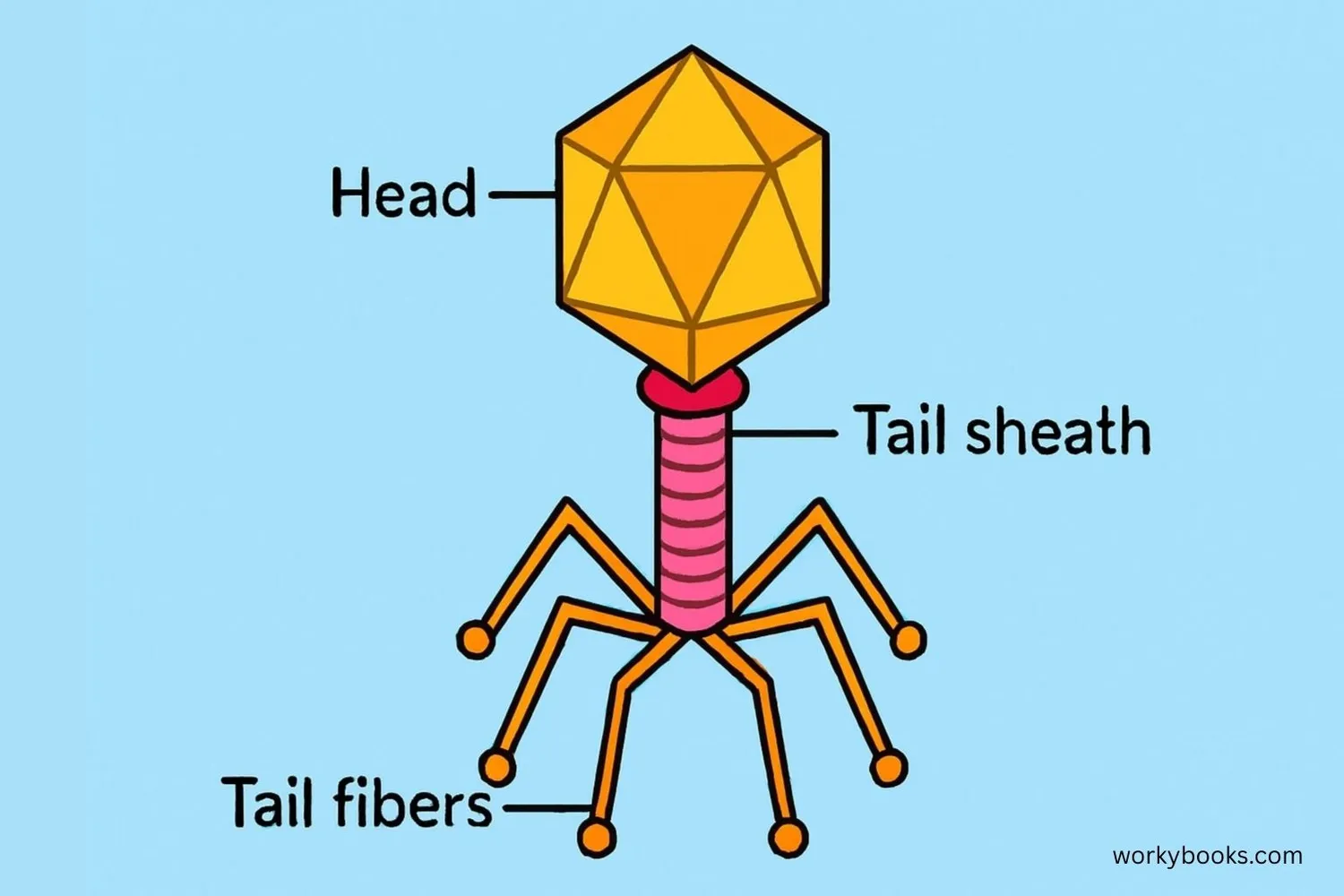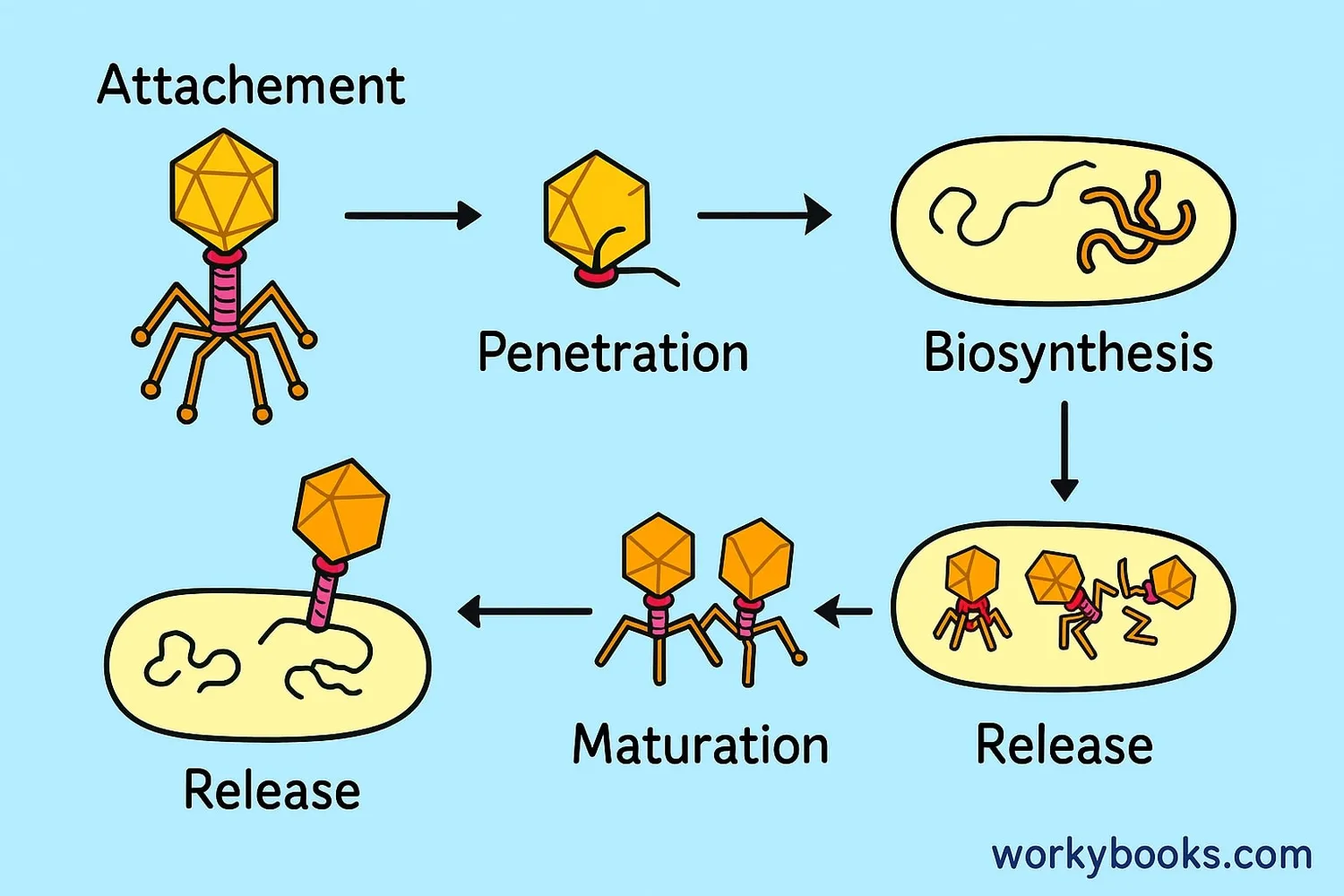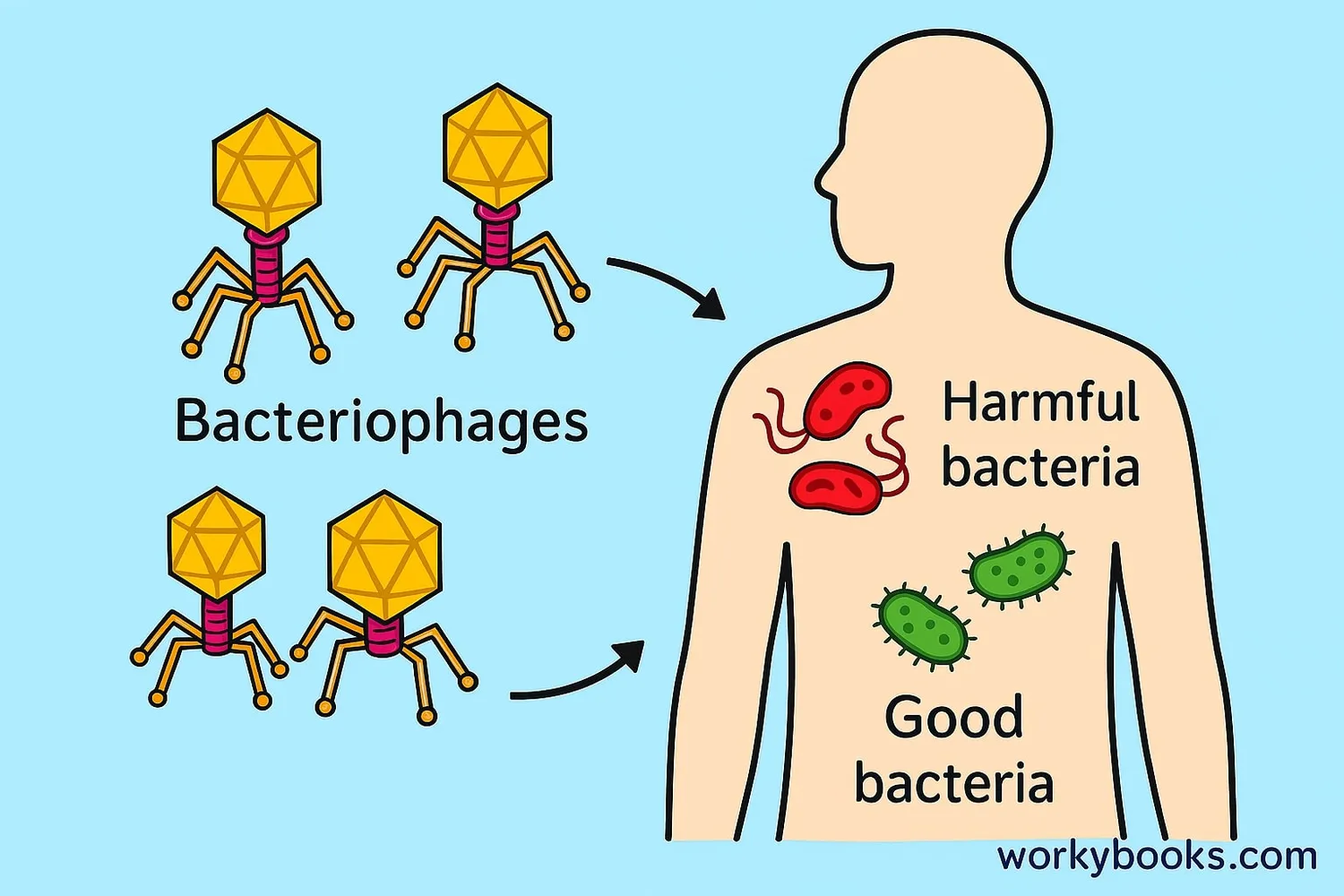Bacteriophage - Definition, Examples, Quiz, FAQ, Trivia
Discover how these tiny viruses help fight harmful bacteria and protect our health
What is a Bacteriophage?

A bacteriophage (pronounced back-TEER-ee-oh-fayj) is a special type of virus that infects bacteria. The name comes from Greek words meaning "bacteria eater." These tiny organisms are found everywhere in nature - in soil, water, and even inside our bodies!
Think of bacteriophages as specialized hunters that only target bacteria. They have a unique structure with a head that contains their genetic material, a tail that helps them attach to bacteria, and tail fibers that help them recognize specific bacteria to infect.
Science Fact!
Bacteriophages are the most abundant organisms on Earth! There are approximately 10³¹ phages on our planet - that's more than every other organism combined!
Bacteriophage Life Cycle

Bacteriophages have two main life cycles: the lytic cycle and the lysogenic cycle. The lytic cycle is like a quick attack, while the lysogenic cycle is more like a long-term strategy.
Attachment
The phage attaches to specific receptors on the bacterial cell surface
Penetration
The phage injects its genetic material into the bacterium
Biosynthesis
The bacterial cell is hijacked to make new phage parts
Maturation
New phage particles are assembled inside the bacterium
Release
The bacterial cell bursts, releasing new phages to infect more bacteria
In the lysogenic cycle, the phage's genetic material becomes part of the bacterial chromosome and replicates with it. The phage remains dormant until conditions trigger it to enter the lytic cycle.
Viral Specificity
Each type of bacteriophage can only infect specific types of bacteria. This specificity makes them useful in medicine for targeting harmful bacteria without affecting beneficial ones.
Bacteriophage Therapy

Bacteriophage therapy is the use of phages to treat bacterial infections. This approach is especially valuable as antibiotic-resistant bacteria become more common. Phage therapy works by using viruses that specifically target and destroy disease-causing bacteria.
Identification
Doctors identify the specific bacteria causing an infection
Selection
The right phages that target those bacteria are selected
Application
Phages are applied to the infection site through various methods
Advantages of phage therapy include:
• Highly specific to harmful bacteria
• Self-replicating at infection sites
• Few side effects compared to antibiotics
• Effective against antibiotic-resistant bacteria
While phage therapy shows great promise, it is still considered an experimental treatment in most countries and is primarily used when antibiotics fail.
Bacteriophage Knowledge Check
Test your understanding of bacteriophages with this interactive quiz. Answer all 5 questions to see how much you've learned.
Frequently Asked Questions
Here are answers to common questions about bacteriophages:
Bacteriophage Science Facts
Discover some fascinating facts about bacteriophages:
Most Abundant Organism
Bacteriophages are the most numerous organisms on Earth. There are approximately 10³¹ phages on our planet - if you lined them up end to end, they would stretch for 200 million light years!
Early Medical Use
Phage therapy was used to treat infections before antibiotics were discovered. In the 1920s-1940s, phages were commercially available to treat various bacterial infections in humans and animals.
Genetic Research
Bacteriophages were crucial in early genetic research. The Hershey-Chase experiment in 1952 used phages to prove that DNA, not protein, is the genetic material that carries inheritance information.
Ecosystem Balance
Phages play a vital role in ecosystem balance by controlling bacterial populations. In oceans alone, phages kill approximately 20-40% of all bacteria every day, recycling nutrients and maintaining ecological balance.


